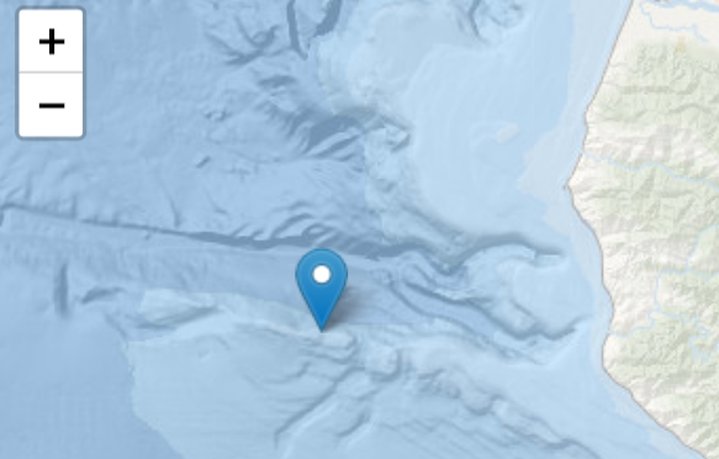
The location of buoy 094 | CDIP.
###
The bomb cyclone that blasted the Emerald Triangle with 80 mph winds and nearly 9 inches of snow along highway passes last week also produced one of the largest waves recorded in recent U.S. history.
Manager James Behrens of the Coastal Data Information Program, a network operated by a division of U.C. San Diego’s Scripps Institution of Oceanography that’s been monitoring waves in the States since 1975, told the Outpost that a monstrous 74.4-foot wave was recorded off the Humboldt Coast on Nov. 27 at 7:44 p.m.
The storm that impacted the California coast last week generated some of the largest waves ever recorded by CDIP buoys. At Cape Mendocino, CDIP staton 094, the significant wave height was 13m/43ft and the largest wave measured was 22.7m/74.4ft!https://t.co/FeUStWsF9A
— CDIP Buoys (@CDIPBuoys) December 2, 2019
“That’s about as a big of a wave as we’ve ever measured,” Behrens said.
An average of the largest waves recorded during a half-hour period, known as “significant wave height” values, were used to determine the wave’s size. That night, the waves recorded roughly 20 miles west of Cape Mendocino by CDIP buoy 094 were more than 43 feet tall on average.
The only higher average ever recorded by the CDIP was in 2012, when waves in the Gulf of Alaska were reached an average of 50 feet.
“Way out in the Gulf of Alaska in ultra-deep water where we would expect to occasionally measure huge seas under active storms,” Behrens said.
A second CDIP buoy also recorded some massive waves off the coast of Samoa on the night of Nov. 27, noting a significant wave height of 37.6 feet.

Buoy 168 located off the coast of Samoa | CDIP
Despite the size of these record waves, Behrens said they shouldn’t be confused with rogue waves.
“A rogue wave is more than twice the average,” he said. “These are really big waves during a very heavy sea state.”
CLICK TO MANAGE